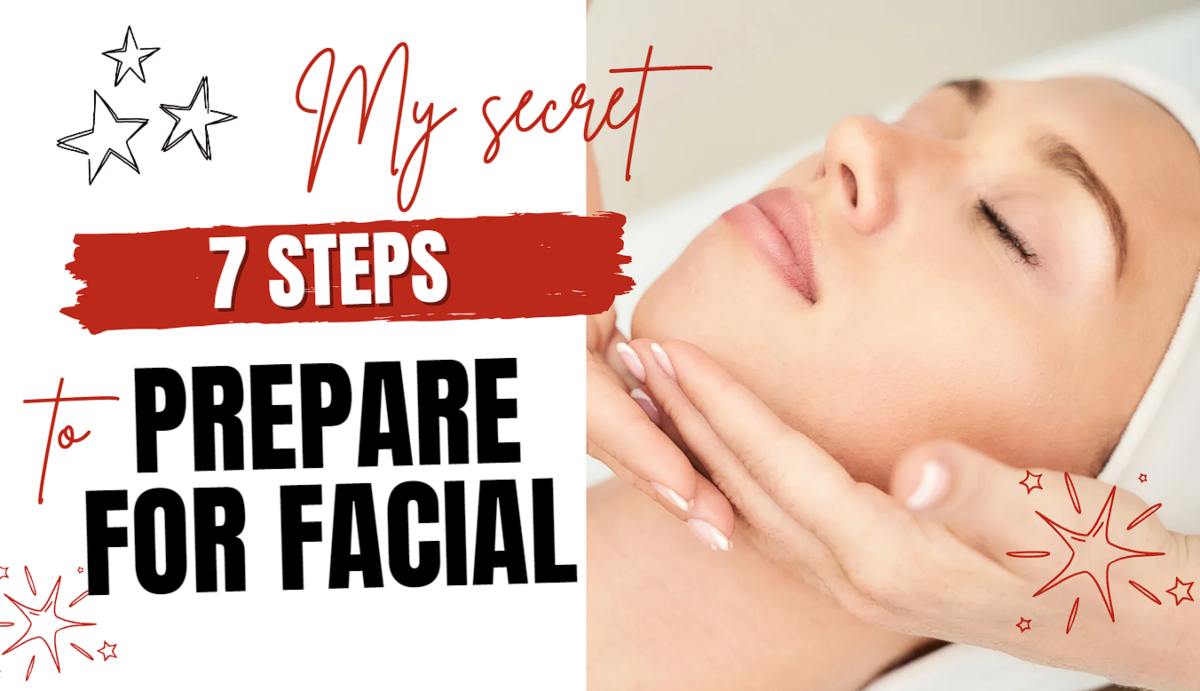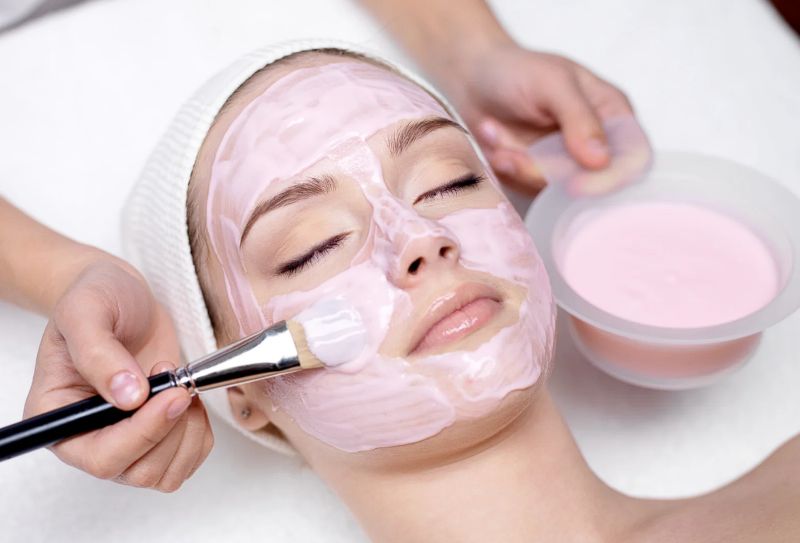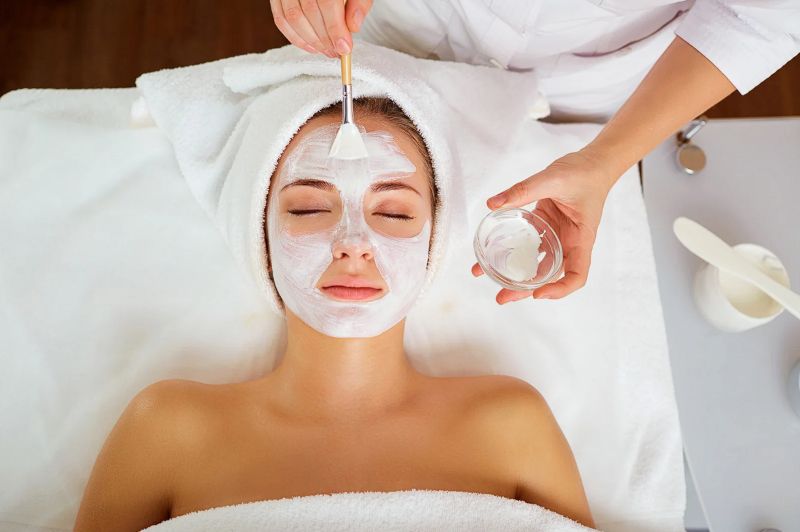7 Essential Steps on How To Prepare For Facial Like a Pro

How To Prepare For Facial: Facials are one of the best ways to pamper your skin, but if you want to get the most out of your session, preparation is key. Whether you’re a first-timer or a regular at the spa, knowing how to prepare for a facial can make a world of difference in your experience and the results. So, let’s dive into the seven essential steps to get ready for a facial like a pro!
Table of Contents
Introduction
Why Preparation is Key for a Great Facial
You wouldn’t dive into a workout without a warm-up, right? The same goes for facials. Preparing your skin beforehand can help maximize the benefits, making your facial more effective and your skin more receptive to the treatments. Without proper preparation, your skin might not absorb the products as well, and you could miss out on that glowing, refreshed look you’re aiming for.
The Benefits of Preparing for Your Facial
So, what’s in it for you? By taking the time to prepare, you ensure that your skin is in the best possible condition to receive all the goodness that comes with a facial. This means better hydration, improved texture, and a more radiant complexion. Plus, you’ll avoid potential irritations and get the most bang for your buck. [How To Prepare For Facial]
Step 1: Understand Your Skin Type
Identifying Your Skin Type
First things first—you need to know your skin type. This is the foundation of all good skincare and absolutely crucial before getting a facial. If you’re not sure, a simple way to figure it out is by observing how your skin behaves throughout the day.
Oily Skin
If your face is shiny and greasy by midday, you probably have oily skin. Enlarged pores and frequent breakouts might also be common for you.
Dry Skin
On the other hand, if your skin feels tight, flaky, or rough, you’re likely dealing with dryness. This skin type often lacks the natural oils that keep it hydrated and smooth.
Combination Skin
Does your T-zone (forehead, nose, and chin) get oily while your cheeks stay dry? This is a common indicator of combination skin.
Sensitive Skin
If your skin reacts easily to new products, turning red or getting itchy, you might have sensitive skin. This type requires extra care, especially before a facial.
Why Knowing Your Skin Type Matters for Facials
Why is this so important? Because the facial you choose—and how you prepare for it—should be tailored to your skin type. Using the wrong products or treatments can do more harm than good, leading to irritation or breakouts. [How To Prepare For Facial]

Step 2: Choose the Right Facial for Your Skin
Different Types of Facials
Now that you know your skin type, it’s time to pick the right facial. Not all facials are created equal, and choosing one that aligns with your skin’s needs is crucial.
Hydrating Facials
These are perfect for dry or dehydrated skin. They focus on infusing your skin with moisture, leaving it plump and glowing.
Anti-Aging Facials
If you’re concerned about fine lines and wrinkles, an anti-aging facial can help. These treatments typically involve exfoliation, collagen-boosting products, and sometimes even light therapy. [How To Prepare For Facial]
Acne-Fighting Facials
For those battling breakouts, acne-fighting facials can be a game-changer. They often include deep cleansing, exfoliation, and special treatments to reduce oil production and clear up the skin.
How to Pick the Best Facial for Your Needs
To choose the best facial, consider your skin’s current condition and your goals. Are you looking to hydrate, fight aging, or tackle acne? A quick chat with your esthetician can also help you decide which facial is right for you. [How To Prepare For Facial]
Step 3: Schedule Your Facial at the Right Time
Timing Your Facial for Maximum Benefits
Timing is everything. When you book your facial can impact how your skin reacts and how long the benefits last. Ideally, schedule it when you can relax afterward and avoid sun exposure or makeup.
Pre-Event Facials: When and Why
If you’re getting a facial before a big event, aim to do it 3-5 days prior. This gives your skin time to recover and glow, ensuring you’re picture-perfect on the day.
Routine Facials: Setting a Regular Schedule
For general maintenance, scheduling a facial every 4-6 weeks is a good rule of thumb. This helps to keep your skin in top shape, addressing any concerns before they become major issues. [How To Prepare For Facial]

Step 4: Avoid Certain Activities Before Your Facial
What to Avoid: Waxing, Exfoliating, and Sun Exposure
Before your facial, there are a few things you should steer clear of. Avoid waxing, as it can leave your skin too sensitive for the treatments. Exfoliating right before your facial can also lead to irritation. And definitely, avoid sun exposure, as it can make your skin more prone to damage during the facial.
Why These Activities Can Harm Your Skin Pre-Facial
These activities can strip your skin of its natural oils or make it more sensitive, leading to irritation or even injury during your facial. So, it’s best to give your skin a break from these stressors in the days leading up to your appointment. [How To Prepare For Facial]
Step 5: Cleanse Your Skin Properly Before the Facial
The Importance of Cleansing
Cleansing your skin before a facial is a must. It removes dirt, oil, and makeup, allowing the facial products to penetrate better and work their magic.
How to Cleanse Your Skin for Best Results
For the best results, use a gentle cleanser suited to your skin type. Avoid harsh soaps or scrubs that might irritate your skin. Make sure to thoroughly rinse off all residue and pat your face dry with a clean towel. This step helps create a clean slate for the esthetician to work with, ensuring that your skin fully benefits from the facial. [How To Prepare For Facial]
Step 6: Hydrate and Nourish Your Skin
Why Hydration is Crucial
Keeping your skin hydrated before a facial is key to achieving that post-facial glow. Hydrated skin is more supple, responsive, and able to absorb the nourishing ingredients used during the treatment. Without adequate hydration, your skin might struggle to benefit from the facial, resulting in less impressive outcomes.
Tips for Hydrating Your Skin Pre-Facial
To keep your skin well-hydrated, drink plenty of water in the days leading up to your facial. You can also use a hydrating serum or moisturizer to lock in moisture. For an extra boost, consider a hydrating mask the night before your appointment. Avoid alcohol and caffeine as they can dehydrate your skin, making it less receptive to treatment. [How To Prepare For Facial]
Step 7: Communicate Your Skin Concerns with Your Esthetician
The Importance of Communication
Your esthetician isn’t a mind reader—if you have specific concerns or goals, it’s essential to communicate them before your facial begins. Whether it’s dealing with breakouts, addressing dry patches, or targeting wrinkles, your esthetician can tailor the facial to meet your needs.
What to Discuss with Your Esthetician Before the Facial
Be honest about your skin’s history. Have you had any recent reactions to products? Are you using any new medications or treatments? Do you have specific areas you’d like them to focus on? The more information you provide, the better they can customize your facial for optimal results. [How To Prepare For Facial]

Conclusion
Recap of the 7 Essential Steps
Preparing for a facial like a pro is all about understanding your skin and giving it the care it needs before your appointment. By following these seven steps—knowing your skin type, choosing the right facial, timing it correctly, avoiding certain pre-facial activities, cleansing thoroughly, hydrating, and communicating with your esthetician—you can ensure that your skin is in the best possible shape to benefit from the treatment. [How To Prepare For Facial]
Final Tips for a Pro-Level Facial Experience
Remember, the more you put into preparing for your facial, the more you’ll get out of it. Treat it as part of your self-care routine, and don’t hesitate to ask your esthetician questions or for advice on post-facial care. With the right preparation, you’re not just getting a facial—you’re investing in your skin’s health and beauty. [How To Prepare For Facial]
FAQs
Q1. How often should I get a facial?
For most skin types, getting a facial every 4-6 weeks is ideal. This allows your skin to go through its natural regeneration cycle and continuously benefit from professional care.
Q2. Can I wear makeup after a facial?
It’s best to avoid makeup for at least 24 hours after a facial to allow your skin to breathe and fully absorb the products used during the treatment.
Q3. What should I do if I have a reaction after a facial?
If you experience redness, irritation, or breakouts after a facial, apply a soothing product like aloe vera or a gentle moisturizer. If the reaction persists, consult your esthetician or a dermatologist.
Q4. How long does it take to see results from a facial?
You can typically see some immediate results, like a glow and smoother texture, right after a facial. However, the full benefits, such as improved skin clarity and reduced breakouts, may take a few days to fully manifest.
Q5. Is it safe to get a facial during pregnancy?
Yes, but it’s essential to inform your esthetician about your pregnancy so they can avoid certain products and treatments that may not be safe for expecting mothers. Opt for gentler, hydrating facials during pregnancy.






